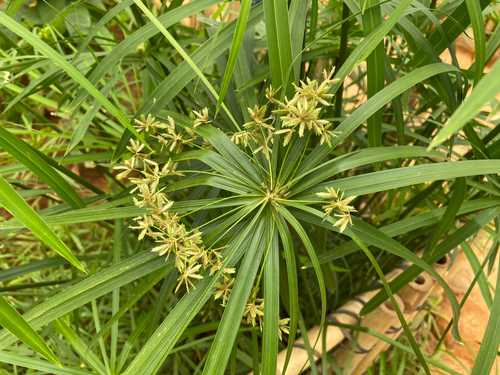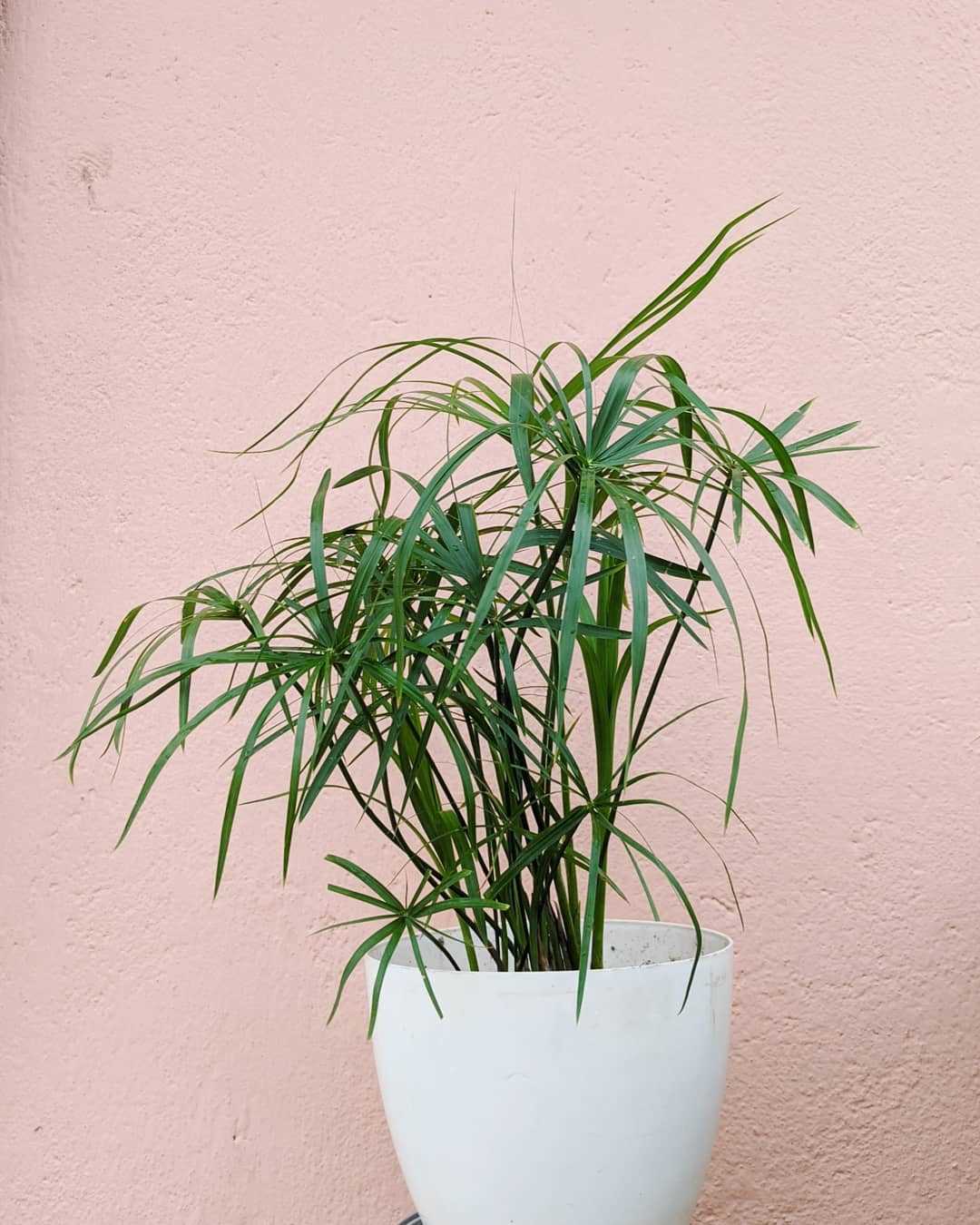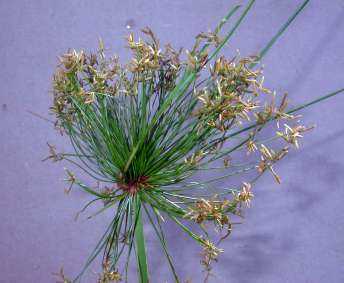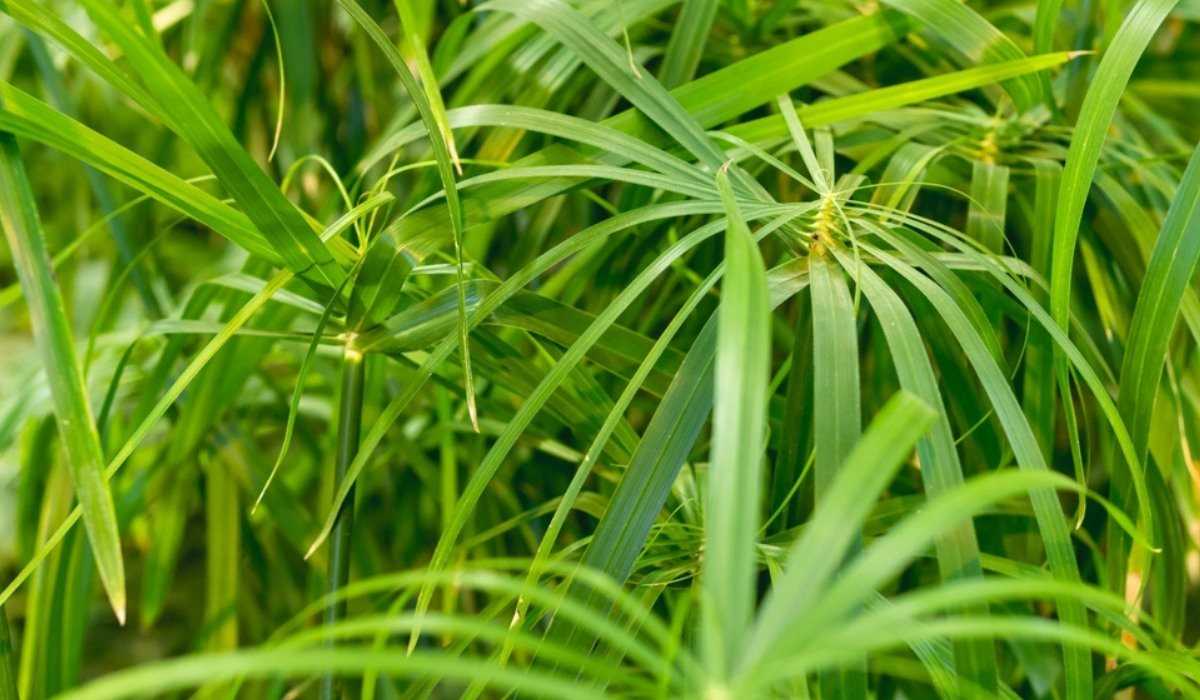- Understanding Cyperus: Origins, Anatomy, and Growth Habit
- Anatomy of Cyperus:
- Growth Habit of Cyperus:
- Origins of Cyperus:
- Essential Care Tips for Healthy Cyperus Plants
- 1. Light Requirements:
- 2. Watering:
- 3. Humidity:
- 4. Temperature:
- 5. Fertilization:
- 6. Pruning:
- 7. Potting and Repotting:
- 8. Pests and Diseases:
- Watering Cyperus: Best Practices and Common Mistakes to Avoid
- 1. Watering Frequency
- 2. Amount of Water
- 3. Water Quality
- 4. Mistings and Humidity
- 5. Signs of Overwatering and Underwatering
- 6. Watering during Dormancy
- 7. Outdoor Cyperus
- Sunlight and Temperature Requirements for Thriving Cyperus Plants
- Choosing the Right Soil and Pot for Cyperus Plants
- Choosing the Soil
- Choosing the Pot
- Pruning and Propagation Techniques for Cyperus
- Pruning Techniques
- Propagation Techniques
- Common Pests and Diseases that Affect Cyperus Plants
- Pests
- Diseases
- Prevention and Treatment
- Different Cyperus Species: Photos, Descriptions, and Care Guidelines
- Cyperus papyrus
- Cyperus alternifolius
- Cyperus haspan
- Cyperus brevifolius
- Q&A:
- How do I care for my Cyperus plant?
- What are some popular species of Cyperus?
- Can I grow Cyperus indoors?
- How often should I water my Cyperus plant?
- What kind of soil does Cyperus prefer?
- Can I propagate Cyperus?
- Do Cyperus plants require a lot of sunlight?
- Video: "Master Lightroom Mobile Retouching in 4 Easy Steps for Stunning Photos"
Are you a plant enthusiast looking for a new addition to your collection? Look no further than Cyperus, a diverse and fascinating genus of plants. With over 700 species, Cyperus offers a wide variety of shapes, sizes, and colors to suit any indoor or outdoor space.
Whether you are a beginner or seasoned gardener, this comprehensive guide will provide you with all the information you need to care for your Cyperus plants. From watering and light requirements to proper soil and fertilization, we have got you covered.
Not only will you learn how to care for your Cyperus plants, but you will also be treated to stunning photos that showcase the beauty and diversity of this genus. From delicate flowers to vibrant foliage, these photos will surely inspire and captivate you.
In addition to care tips and beautiful photos, this guide also provides detailed information on various Cyperus species. Learn about their natural habitats, growth habits, and unique characteristics. Whether you are interested in Cyperus alternifolius, Cyperus papyrus, or any other species, you will find valuable insights and facts here.
So, if you are ready to explore the world of Cyperus plants and elevate your plant collection to new heights, dive into this comprehensive guide. Get ready to be amazed by the beauty and diversity of this fascinating genus!
Understanding Cyperus: Origins, Anatomy, and Growth Habit
Cyperus is a genus of plants belonging to the family Cyperaceae, commonly known as sedges. With over 700 species, Cyperus is widely distributed across the world, found in both tropical and temperate regions.
Anatomy of Cyperus:
Cyperus plants typically have tall, slender stems that arise from underground rhizomes. The stems are triangular in cross-section, with leaves arranged in three rows, giving a distinctive appearance. These leaves are usually long, thin, and graceful.
The flowers of Cyperus are small and inconspicuous, clustered together in umbrella-like inflorescences. Each flower is surrounded by several bracts, which may be green or brown in color. The inflorescences can vary in shape and size depending on the species.
The roots of Cyperus plants are fibrous and help with anchoring the plant in the soil. They also aid in the plant’s nutrient uptake and water absorption.
Growth Habit of Cyperus:
Cyperus plants have a clumping or spreading growth habit, depending on the species. Some species form dense tufts or mats, while others spread through rhizomes, creating colonies.
These plants thrive in wet or marshy environments, and some species are even adapted to grow in aquatic habitats. They can often be found near bodies of water, such as ponds, lakes, or streams.
Cyperus plants are typically perennial, meaning they live for multiple years. They have a high growth rate and can quickly establish themselves in favorable conditions.
Origins of Cyperus:
The genus Cyperus has a diverse origin, with species found in various parts of the world. Some species are native to specific regions, while others have been introduced and naturalized in new locations.
Many Cyperus species are native to Africa, particularly tropical and subtropical regions. These plants are well-adapted to hot and humid climates and are often encountered in wetlands across the continent.
Other notable regions of native diversity for Cyperus include Asia, Australia, and the Americas. Some species have become invasive in certain areas, causing concerns for native ecosystems.
In cultivation, certain Cyperus species are popular as ornamental plants, cherished for their unique foliage and graceful appearance.
Essential Care Tips for Healthy Cyperus Plants
Cyperus plants, also known as papyrus or umbrella plants, are beautiful additions to any indoor or outdoor garden. To ensure the health and vitality of your Cyperus plants, follow these essential care tips:
1. Light Requirements:
Cyperus plants require bright and indirect sunlight. Place them in a location where they can receive at least 4-6 hours of sunlight per day. Avoid direct sunlight as it can scorch the leaves.
2. Watering:
Keep the soil consistently moist but not overly watered. Avoid letting the soil completely dry out between waterings. Cyperus plants prefer to be kept consistently moist, so water them whenever the top inch of soil feels dry to the touch.
3. Humidity:
Cyperus plants thrive in high humidity environments. To increase humidity, mist the leaves regularly with room temperature water, especially during dry seasons or in air-conditioned rooms. You can also place a tray filled with water near the plant to provide continuous moisture in the air.
4. Temperature:
Cyperus plants prefer temperatures between 65°F (18°C) and 75°F (24°C). Avoid exposing them to cold drafts or temperatures below 55°F (13°C), as it can cause damage to the foliage.
5. Fertilization:
Feed your Cyperus plants with a balanced liquid fertilizer once a month during the growing season (spring and summer). Dilute the fertilizer to half or quarter strength to avoid overfeeding. Do not fertilize during the dormant winter months.
6. Pruning:
Regularly trim and remove any yellow or dead leaves to promote healthy growth. Pruning also helps maintain a neat and attractive appearance.
7. Potting and Repotting:
Choose a pot with good drainage and use a well-draining soil mix for your Cyperus plants. Repot them every 1-2 years, or when the roots start to outgrow the pot. Repotting should be done in the spring, just before the start of the growing season.
8. Pests and Diseases:
Monitor your Cyperus plants for common pests like spider mites or aphids. If you notice any infestation, treat them with an organic insecticidal soap or neem oil spray. Proper care and maintenance, including good air circulation, can help prevent diseases like root rot.
By following these essential care tips, you can enjoy healthy and vibrant Cyperus plants in your garden or indoor space. Remember to observe and adjust the care routine based on the specific needs of your plants. With proper care, your Cyperus plants will thrive and beautify your surroundings.
Watering Cyperus: Best Practices and Common Mistakes to Avoid
Watering is a critical aspect of Cyperus plant care. Proper watering practices will help ensure the health and vitality of your Cyperus plants, while avoiding common mistakes can prevent issues such as root rot and wilting. Here are some best practices and common mistakes to avoid when watering your Cyperus:
1. Watering Frequency
It is important to provide your Cyperus plants with regular moisture, as they thrive in moist soil. However, overwatering can lead to root rot, so it’s essential to find the right balance. Water your Cyperus plants when the top inch of soil feels dry to the touch. This usually translates to watering every 1-2 weeks, depending on environmental conditions.
2. Amount of Water
When watering your Cyperus plants, ensure that you thoroughly wet the soil. Water until you see water draining out from the bottom of the pot. This will help prevent the accumulation of excess water, which can lead to root rot. However, avoid leaving your Cyperus plants sitting in standing water, as this can also lead to root rot.
3. Water Quality

The quality of water used to water your Cyperus plants is important. Avoid using water that has been treated with water softeners or contains high levels of chlorine or fluoride. These chemicals can harm the plants’ roots. If your tap water is high in these chemicals, consider using filtered or distilled water.
4. Mistings and Humidity
Cyperus plants appreciate high humidity. You can increase humidity by misting the leaves with water regularly. Additionally, you can place the pot on a tray filled with pebbles and water, making sure the bottom of the pot is not submerged in water. As the water evaporates, it will increase the humidity around the plant.
5. Signs of Overwatering and Underwatering
It’s essential to pay attention to your Cyperus plants and watch for signs of overwatering or underwatering. Overwatering may cause yellowing leaves, wilting, and a foul odor. Underwatering may cause the leaves to become dry and brittle. Adjust your watering practices accordingly if you notice any of these signs.
6. Watering during Dormancy
Cyperus plants go through a period of dormancy during the winter months. During this time, their watering needs are reduced. Water sparingly, but make sure the soil doesn’t dry out completely. Reduce the frequency of watering to once every 2-3 weeks.
7. Outdoor Cyperus
If you have planted your Cyperus outdoors, keep in mind that it may require more frequent watering, especially during hot and dry weather. Monitor the moisture level of the soil and adjust your watering accordingly. Adding mulch around the plants can help retain moisture in the soil.
By following these best practices and avoiding common watering mistakes, you can ensure the health and longevity of your Cyperus plants. Remember, it’s always better to underwater than overwater, and pay attention to the unique needs of each individual plant.
Sunlight and Temperature Requirements for Thriving Cyperus Plants
Cyperus plants require bright, indirect sunlight to thrive. They prefer a location with at least 6 hours of sunlight per day. However, they should be protected from direct sunlight, especially during the hottest part of the day, as it can cause their leaves to burn.
When it comes to temperature, Cyperus plants prefer a warm environment. They thrive in temperatures between 65°F (18°C) and 80°F (27°C). Extreme temperature fluctuations should be avoided, as this can stress the plant and negatively impact its growth.
In addition to proper lighting and temperature, it is important to provide adequate humidity for Cyperus plants. They prefer humid conditions and will benefit from regular misting or the use of a humidity tray. Dry air can cause their leaves to turn brown and crispy.
It’s also worth noting that Cyperus plants are sensitive to cold drafts, so they should be kept away from windows and doors during the colder months. If the temperature drops below 60°F (15°C), it’s best to move the plant to a warmer location.
Overall, maintaining the right balance of sunlight, temperature, and humidity will help ensure that your Cyperus plants thrive and grow beautifully.
Choosing the Right Soil and Pot for Cyperus Plants
Cyperus plants, also known as umbrella plants, are popular houseplants known for their lush, green foliage. One of the key factors in their successful growth is the type of soil and pot they are planted in. Here are some tips for choosing the right soil and pot for your Cyperus plants:
Choosing the Soil
- Well-draining: Cyperus plants prefer soil that drains well. It’s important to choose a soil mix that has good drainage to prevent water from sitting around the roots, which can lead to root rot.
- Loose and light: The soil should be loose and light to promote healthy root growth. A mix that includes perlite or sand can help improve drainage and aeration.
- Rich in organic matter: Cyperus plants benefit from soil that is rich in organic matter. Adding compost or well-rotted manure to the soil mix can help provide the necessary nutrients for the plants to thrive.
- pH neutral to slightly acidic: Cyperus plants prefer slightly acidic to neutral soil. A pH level of around 6.0 to 7.0 is ideal. You can test the pH level of your soil using a pH testing kit.
Choosing the Pot
Size: When selecting a pot for your Cyperus plant, choose one that is slightly larger than the current root ball. This will allow room for the roots to spread and promote healthy growth.
Drainage: It’s crucial to choose a pot with drainage holes at the bottom. Proper drainage is essential for preventing waterlogged soil and root rot.
Material: While there are various pot materials available, such as plastic, ceramic, and terracotta, it’s important to choose a pot with good moisture retention. Terra cotta pots are a popular choice as they allow air and moisture to pass through the walls, promoting healthy root growth.
Elevation: Using pot feet or a tray with pebbles underneath the pot can help improve drainage and prevent water from sitting in the tray, which can lead to root rot.
| Soil | Pot |
|---|---|
| Well-draining | Size slightly larger than the root ball |
| Loose and light | Drainage holes at the bottom |
| Rich in organic matter | Good moisture retention |
| pH neutral to slightly acidic | Elevation to improve drainage |
By choosing the right soil and pot for your Cyperus plants, you can create a healthy and thriving environment for these beautiful houseplants. Remember to water them regularly and provide adequate sunlight to ensure their growth and development.
Pruning and Propagation Techniques for Cyperus

Pruning Techniques
Cyperus plants require regular pruning to maintain their desired shape and size. Here are some pruning techniques to follow:
- Remove dead or yellowing leaves: Regularly inspect your Cyperus plant for any dead or yellowing leaves. Use a pair of clean and sharp gardening shears to cut these leaves off at the base. This will help to maintain the plant’s overall health and appearance.
- Trim overgrown stems: If your Cyperus plant starts to grow too tall or bushy, you can trim back the stems to the desired height. Use the same gardening shears to make clean cuts just above a leaf node. This encourages new growth and helps to maintain a compact and attractive shape.
- Prune after flowering: Some species of Cyperus produce flowers. Once the flowers have faded and the plant has finished flowering, prune off the spent flower stems. This helps to redirect the plant’s energy into producing new growth rather than seed production.
Propagation Techniques
If you want to propagate your Cyperus plant, here are a few methods to try:
- Dividing rhizomes: Cyperus plants generally have rhizomatous roots, which can be divided to create new plants. Carefully dig up the plant and gently separate the rhizomes into smaller sections, making sure each section has a few healthy roots. Replant these sections into separate pots with fresh potting soil, and water thoroughly.
- Taking stem cuttings: Another way to propagate Cyperus is by taking stem cuttings. Select a healthy stem and use clean and sharp gardening shears to make a cutting just below a leaf node. Remove the lower leaves, leaving a few at the top. Plant the cutting in a pot with moist soil and keep it in a warm and humid environment until roots develop.
- Sowing seeds: If your Cyperus plant produces seeds, you can collect them and sow them in pots or seed trays filled with well-draining potting soil. Keep the soil consistently moist and provide the seeds with warm and bright conditions for germination. Transplant the seedlings into individual pots once they are large enough to handle.
Remember to provide proper care, including regular watering and appropriate light levels, to ensure the success of your propagated Cyperus plants.
Common Pests and Diseases that Affect Cyperus Plants
Pests

- Spider Mites: These tiny pests are common on Cyperus plants. They feed on the leaves, causing yellowing and small webs.
- Aphids: Aphids are small insects that suck the sap from the plants. They can cause yellowing of the leaves and stunted growth.
- Mealybugs: Mealybugs are small insects that leave a white, powdery substance on the leaves. They feed on the plant sap and can cause wilting and distortion of the foliage.
- Thrips: Thrips are tiny insects that feed on the leaves, causing silver streaks and bronzing of the foliage. They can also transmit viruses to the plant.
Diseases

- Root Rot: Root rot is a common disease of Cyperus plants. It is caused by overwatering or poorly drained soil. The roots become mushy and dark, and the plant may wilt or die.
- Leaf Spot: Leaf spot is a fungal disease that causes small, dark spots on the leaves. The spots may enlarge and merge, leading to yellowing and leaf drop.
- Powdery Mildew: Powdery mildew is a fungal disease that appears as a white, powdery growth on the leaves. It can cause leaf distortion and stunted growth.
- Black Mold: Black mold is a fungal disease that appears as a black, velvety growth on the leaves. It can be caused by high humidity and poor air circulation.
Prevention and Treatment

To prevent and treat pest infestations, regularly inspect your Cyperus plants for any signs of pests. Remove any affected leaves or plants to prevent the spread. Use insecticidal soap or neem oil to control pests.
To prevent and treat diseases, ensure proper watering and drainage. Avoid overwatering and provide good air circulation. Use fungicides if necessary, following the instructions on the label.
Regularly clean and disinfect your gardening tools to prevent the spread of diseases. Quarantine any new plants before introducing them to your Cyperus plants.
Different Cyperus Species: Photos, Descriptions, and Care Guidelines
Cyperus papyrus
Commonly known as papyrus, Cyperus papyrus is a tall, aquatic plant that thrives in moist environments. It has long, triangular stems that can reach a height of 4-5 meters. The plant is native to the Nile Delta in Egypt and is famous for its use in ancient Egypt to make paper.
Care Guidelines:
- Place the papyrus in a container with water, ensuring that the roots are submerged.
- Keep the plant in bright, indirect sunlight.
- Change the water regularly to prevent the buildup of algae.
- Trim any dead or yellowing leaves to maintain the plant’s appearance.
Cyperus alternifolius
Cyperus alternifolius, also known as umbrella papyrus or umbrella sedge, is a popular ornamental plant. It has long, thin stems that branch out at the top, giving it the appearance of an umbrella. The plant is native to Madagascar and thrives in moist, well-draining soil.
Care Guidelines:
- Plant the umbrella papyrus in a container filled with well-draining soil.
- Place the plant in an area with bright, indirect sunlight.
- Water the plant regularly, keeping the soil moist but not waterlogged.
- Feed the plant with a balanced liquid fertilizer every two weeks during the growing season.
Cyperus haspan
Cyperus haspan, commonly known as marsh flat sedge, is a perennial grass-like plant. It has slender stems with clusters of small brown flowers. The plant is native to wetlands and marshes in North America and is often used for erosion control.
Care Guidelines:
- Plant the marsh flat sedge in a container filled with moist soil.
- Place the plant in a location with full sun to partial shade.
- Water the plant regularly, keeping the soil consistently moist.
- Divide the plant every 2-3 years to prevent overcrowding.
Cyperus brevifolius
Cyperus brevifolius, also known as dwarf papyrus, is a small, clumping plant with thin, triangular stems. It is native to South Africa and is often grown as an ornamental plant due to its unique appearance.
Care Guidelines:
- Plant the dwarf papyrus in a container with well-draining soil.
- Place the plant in an area with full sun to partial shade.
- Water the plant regularly, keeping the soil moist but not waterlogged.
- Feed the plant with a balanced liquid fertilizer every 2-4 weeks during the growing season.
Q&A:
How do I care for my Cyperus plant?
To care for your Cyperus plant, make sure to provide it with bright indirect light, keep the soil consistently moist but not waterlogged, and maintain a warm and humid environment. You can also fertilize it lightly every few months and repot it when necessary.
What are some popular species of Cyperus?
Some popular species of Cyperus include Cyperus papyrus, commonly known as the papyrus plant, Cyperus alternifolius, also known as the umbrella palm, and Cyperus haspan, known as the giant umbrella sedge.
Can I grow Cyperus indoors?
Yes, Cyperus can be grown indoors. It thrives in bright indirect light conditions, making it an excellent choice for indoor gardening. Just make sure to provide it with enough humidity and water regularly to keep the soil moist.
How often should I water my Cyperus plant?
It is important to keep the soil of your Cyperus plant consistently moist. Water it whenever the top inch of soil feels dry to the touch. Avoid overwatering, as it can lead to root rot. Check the moisture level of the soil regularly to determine the watering frequency.
What kind of soil does Cyperus prefer?
Cyperus prefers well-draining soil that is rich in organic matter. You can use a mixture of potting soil, peat moss, and perlite or sand to create a suitable growing medium for your Cyperus plant. The soil should retain moisture without becoming waterlogged.
Can I propagate Cyperus?
Yes, Cyperus can be propagated through division. Carefully divide the plant into smaller clumps, making sure each clump has roots attached. Plant the divisions in separate pots or areas of the garden, and provide them with the same care as the parent plant.
Do Cyperus plants require a lot of sunlight?
Cyperus plants prefer bright indirect light. They can tolerate some direct sunlight, but too much direct sun can scorch their leaves. Place your Cyperus plant in a location where it will receive bright, filtered light for several hours a day.
Video:
"Master Lightroom Mobile Retouching in 4 Easy Steps for Stunning Photos"







